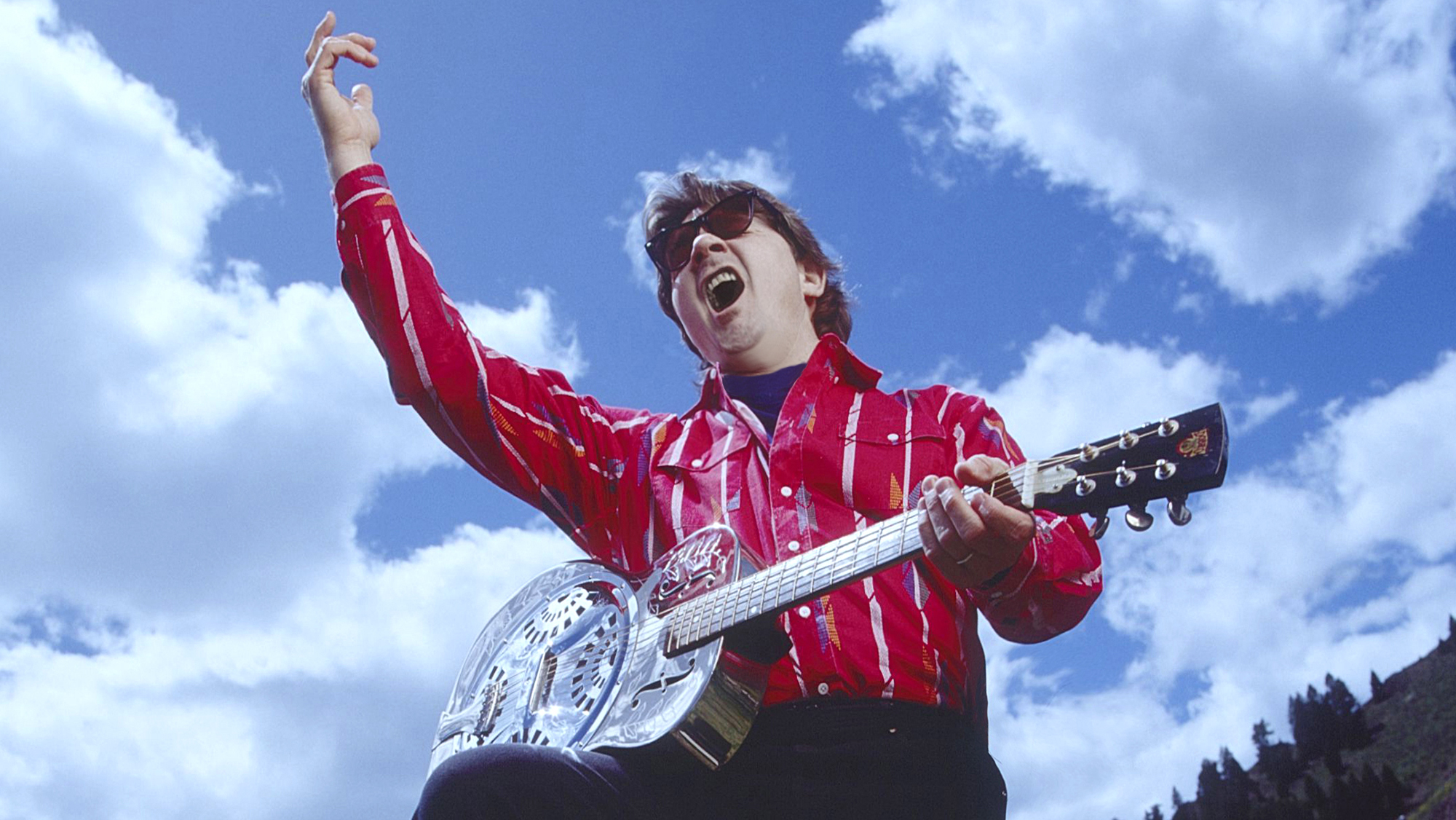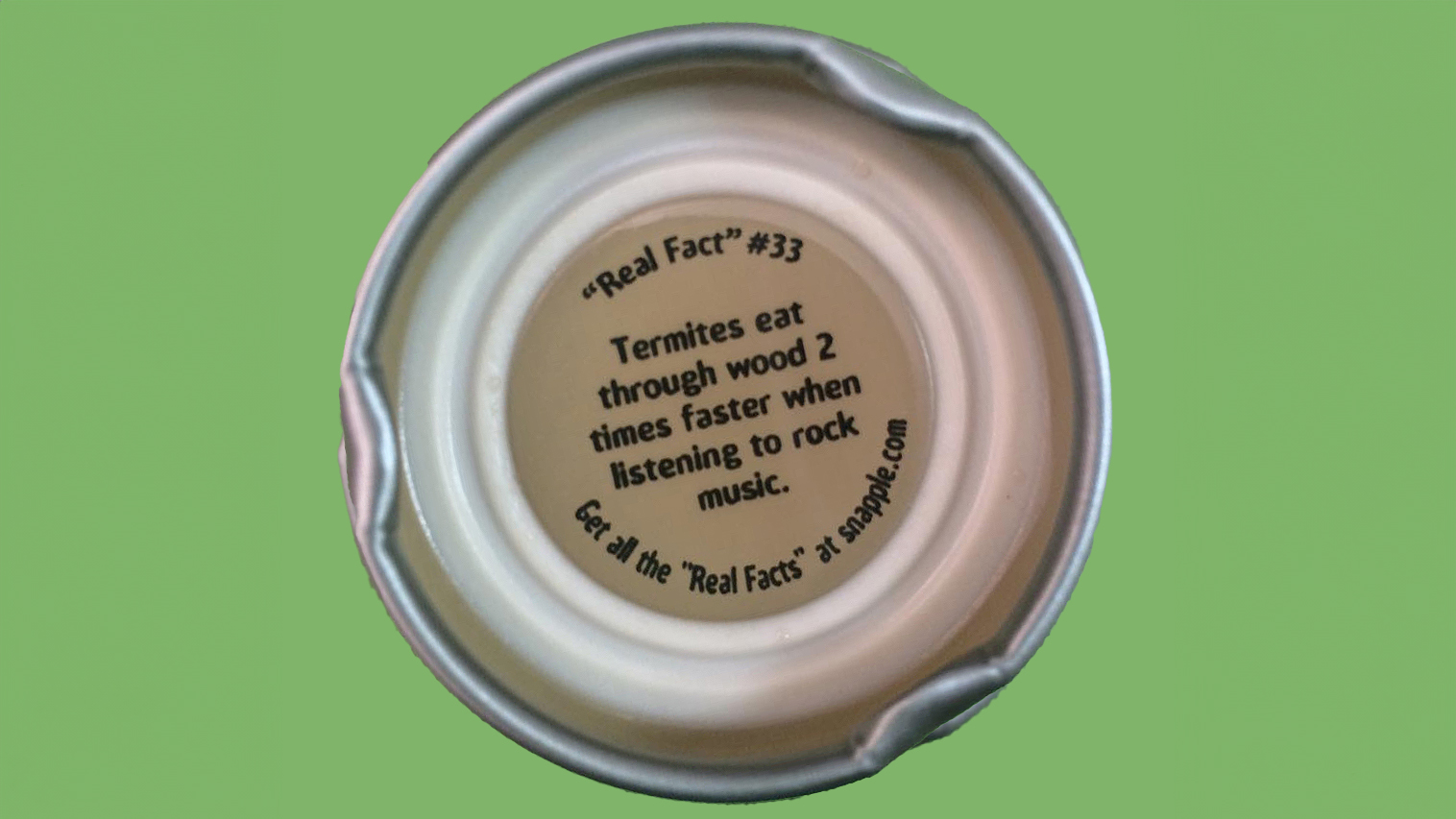“Termites eat through wood two times faster when listening to rock music.” How Snapple and a 1968 news story on Steve Miller led to an urban myth about head-banging insects and heavy metal
A suspicious report about rock music's effect on termites took on new life at the turn of the 21st century. Our reporter dug in

Picture the scenario: You’re listening to Iron Maiden. The music is loud, and you’re head-banging to the beat. According to a popular theory, if your home has become a habitat for termites, they too are thrashing away to the music, gorging themselves at twice the speed as they eat away at your house and home.
Head-banging termites, you ask?
So says a study allegedly published by Royal Society Open Science. According to the claim, researchers found that when termites were exposed to heavy-metal music — replete with shredding electric guitars, booming basses and thundering drums — they ate through wood at twice their usual speed. The study concluded that the vibration of the music may help them break down the wood more efficiently.
I was intrigued when I first read about the study, in particular because of heavy metal’s proven mental health benefits, which include stress relief and a sense of community among its fanbase. Was it possible that animals, including termites, were similarly energized and united through the power of heavy metal?
Thus began a year-long journey that would bring more questions than answers. Along the way, it would uncover the story’s genesis in another dubious report from rock’s 1960s heyday and how it gained new traction at the turn of the century.
Was it possible that animals, including termites, were energized and united in their efforts through the power of heavy metal?
I began by making contact with the Royal Society in London, publishers of Open Science, where the study’s results were said to have been published. To my surprise, they said no such study was in their archive.
Our correspondence led me to a 2005 paper, published by Proceedings of the National Academy of Sciences, that documented a connection between termites and vibro-acoustic signals. Unfortunately, the findings were not specific to heavy metal or any music genre, and unrelated to the alleged study that first got my interest.
All the latest guitar news, interviews, lessons, reviews, deals and more, direct to your inbox!
I contacted Theo Evans, one of the paper’s writers, who told me neither he nor his colleagues had ever researched music — especially heavy metal music — as a vibration stimulus. But he was intrigued enough to look for a connection between “heavy metal” and “termites.”

His research led him to a fan webpage for rock guitarist Steve Miller on a website run by self-described “rock historian” Bruno Ceriotti. There among details about Miller’s live, studio and personal activities is an entry from a nearly 60-year-old news story about an unusual performance by the Steve Miller Band at the Matrix, a once popular San Francisco club, on September 11, 1968.
Among those involved was a mysterious entomologist — insect scientist — named Trenchard Bowelton, whose name was alternately spelled Bowelson:
The Steve Miller Band played in front of a very special guests tonight: a flock of termites! The insects were taken in the rock ’n’ roll scene as guests of a group of government scientists.
At a press conference held at the Matrix one or two days before, Dr. Trenchard Bowelton, an etymological researcher who operated a pest control’s consultant service at University of California at Davis, said his team planned to study the effects of musical vibrations on the ability of the common North American termite to digest his wood cellulose diet.
“I think the U.S. Department of Agricolture [sic] is freaking out,” said Steve Miller who was also present at the press conference. “Rock will only turn off square termites.”
Six days after the show, on September 17, Dr. Bowelson reported to the press, through his assistant Miss Jeanne N. Collier who was working for a master’s degree at UC Davis, that the termites exposed to the music of the Steve Miller Band were spurred to “increased activity,” such as foraging and eating. They neglected their family life and kept on eating instead of feeding their larvae and queen as they should have been doing.
I contacted Ceriotti, who told me he sourced his article from contemporary newspaper clippings. The U.S. Library of Congress helped me locate the original article about the press conference, which had been syndicated to newspapers of the day, ranging from The Christian Science Monitor to The Miami News. The library sent me a photocopy of the Monitor’s article, which bore the title “Rock ’n’ Roll May Bug Bugs” and included the entomologist’s claims.
I think the U.S. Department of Agricolture [sic] is freaking out. Rock will only turn off square termites.”
— Attributed to Steve Miller
Aside from the newspaper clipping, I found no other proof of Bowelton/Bowelson’s credentials or existence. Even the University of California at Davis, where he was supposedly employed as a consultant, had no record of him of his assistant Collier in its archive.
And wasn’t it a little odd, my contact remarked, that the a pest-control consultant was the sole person to make a link between loud music and termites?
Running out of options, I decided to reach out to Joel Selvin, the former pop music columnist for The San Francisco Chronicle, who would have been a regular on the city’s rock scene in the late 1960s. Selvin was intrigued enough to forward my email to Miller himself — it turns out the guitarist is the godfather to Selvin’s daughter.
Sadly, Miller had no recollection whatsoever of any such experiment or claim of his music’s association with a study of termites. He’d never even heard about it before. The whole thing was a mystery to him.
It might have ended there, except for one search result that caught my eye. On July 14, 2003, former Washington Post reporter Peter Carlson posted a factoid on his blog: “Termites eat through wood two times faster when listening to rock music.”
Where, I asked him, did he get his information?
His reply: From inside the cap from a bottle of Snapple. For years the beverage maker has printed “Real Facts” to amuse its drinkers. Carlson had written about Snapple’s trivia for the Post in 2003 and included the item about termites.

I asked Snapple for verification of its “termites and music” rumor but never received an answer. As you might imagine, many of the company’s bottle-cap claims are exaggerated or totally false.
Just for good measure, I contacted the Entomological Society of America, as well as the U.S. Department of Agriculture and National Agricultural Library located in Beltsville, Maryland. Both searched their archives and various databases to no avail. Even Bowleton/Bowleson was a ghost.
Was the entire claim about loud music and termites nothing more than a clever ploy to boost business for a California pest-control company? And how did a story about the Steve Miller Band — a blues-based rock group — end up contributing to a heavy-metal myth?
I have no idea, but one thing seems certain: If you’ve kept your stereo’s volume low for fear of inciting termites, have no fear. Turn it up and head-bang away.
Joe Matera is an Italian-Australian guitarist and music journalist who has spent the past two decades interviewing a who's who of the rock and metal world and written for Guitar World, Total Guitar, Rolling Stone, Goldmine, Sound On Sound, Classic Rock, Metal Hammer and many others. He is also a recording and performing musician and solo artist who has toured Europe on a regular basis and released several well-received albums including instrumental guitar rock outings through various European labels. Roxy Music's Phil Manzanera has called him "a great guitarist who knows what an electric guitar should sound like and plays a fluid pleasing style of rock." He's the author of two books, Backstage Pass; The Grit and the Glamour and Louder Than Words: Beyond the Backstage Pass.

